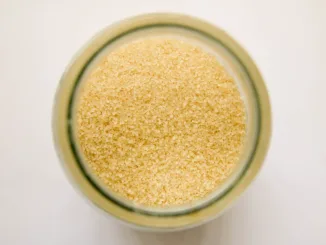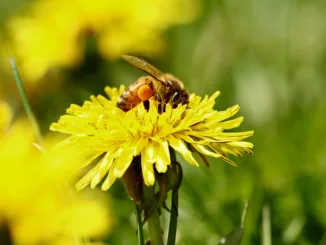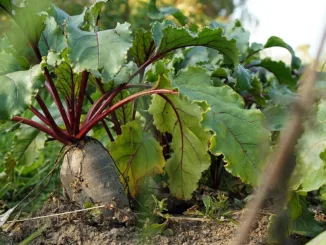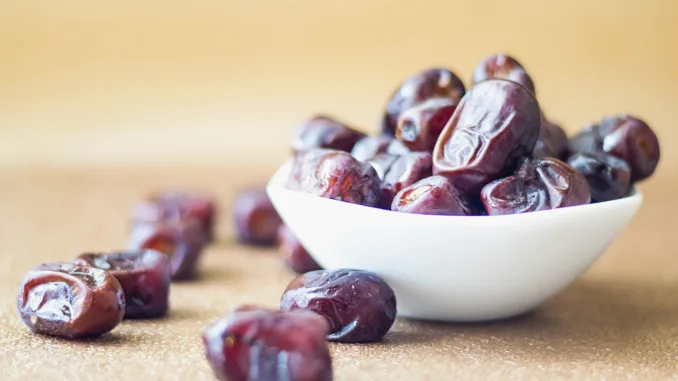
The Medjool date is the world’s oldest cultivated fruit, and today, dates can be used to provide a light and natural sweetness to coffee and tea.
BY EMILY JOY MENESES
BARISTA MAGAZINE ONLINE
Featured photo by VD Photography
These days, dates are commonly associated with the health industry, but this fruit has a history that can be traced to ancient times. In fact, the Medjool date is the world’s oldest cultivated fruit. Today, we’re continuing our “Know Your Sweeteners“ series by exploring how dates (as well as date syrup and date sugar) have become popular sweeteners for coffee and tea alike.
The Story of Dates
The cultivation of dates can be traced as far back as 4000 B.C. Though the fruit’s exact origins are uncertain, most historians trace the earliest consumption of dates to Mesopotamia in the modern-day Middle East. From there, the fruit spread to northwest Africa and parts of South Asia.
Dates first started gaining popularity in the Western world in the 1940s. In the United States, dates became a popular sweetener when sugar was rationed during World War II. Still, today’s date production is led by Egypt, Iran, Saudi Arabia, and Iraq.
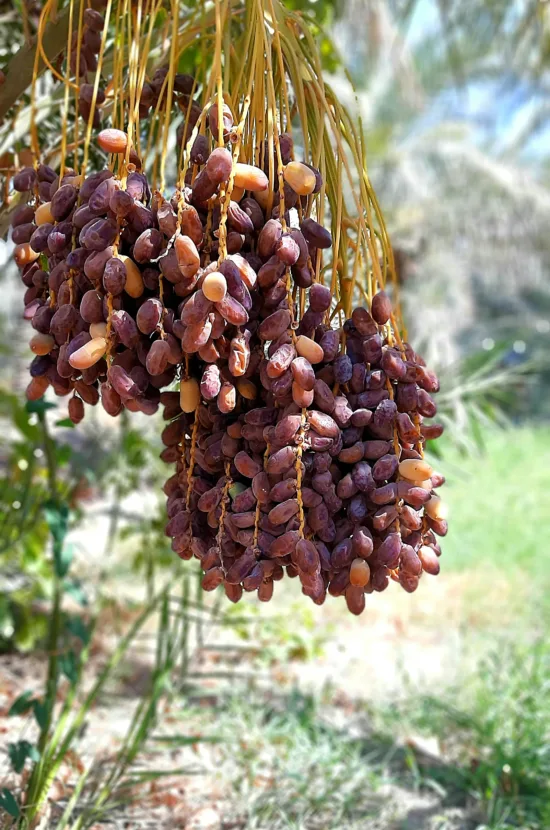
Growing, Harvesting, and Varieties
Dates are grown on date palm trees, which, after planting, can take between seven and 10 years to produce fruit suitable for harvesting. These date palms do best in hot, arid climates. Wind can pollinate date palms naturally, but date farmers typically pollinate each palm by hand to ensure more abundant yields.
There are hundreds of varieties of dates worldwide, each varying in taste, size, and texture. Some of the more well-known varieties are Medjool, Halawy, Deglet Noor, Kahstawi, and Zahdi.
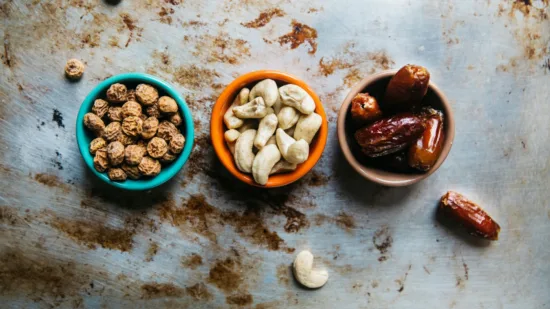
Making Date Syrup and Date Sugar
To make date sugar, ripe dates are first harvested and dried. Once sufficiently dried, they are ground into a fine powder, creating date sugar. Unlike refined table sugar, date sugar retains the natural fiber, vitamins, and minerals present in the fruit, which is why it’s known as a healthier alternative to table sugar.
Date syrup is made by simmering ripe dates with water over gentle heat, until the natural sugars caramelize and create a thick, velvety syrup. The syrup is then strained, usually through a cheesecloth or a nut milk bag, for a smoother consistency.
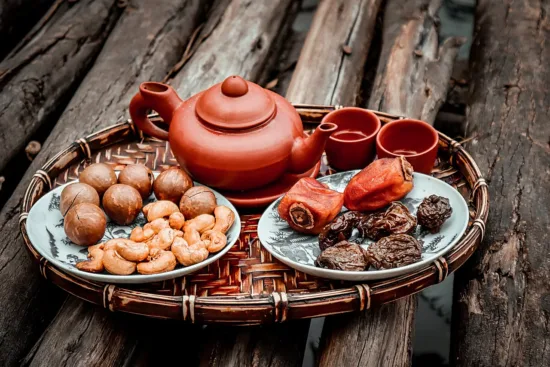
Dates in Coffee and Tea
But are dates a good alternative sweetener for coffee and tea? While date sugar may be difficult to dissolve in liquid, date syrup mixes well, and adds smokiness, depth, and notes of caramel and brown sugar to coffee beverages. Date syrup is often compared to agave, but it has more health benefits. While agave contains trace amounts of vitamins K, C, and E and calcium, dates are a good source of B6, magnesium, manganese, potassium, copper, and more.
The flavor of dates is also popularly used to balance the flavors of various types of tea: Adding a dried date or two to your tea leaves as you steep them, or blending your beverage with a pitted date, will provide a light and natural sweetness.
Natalie Dang, who oversees recipe creation at Hey Hey—a contemporary teahouse located in Los Angeles’ Echo Park neighborhood—shares how dates have transformed the business’s herbal tea recipe.
“We recently started steeping our herbal tea, which is a combination of chrysanthemum and prunella flower, with dried dates—and doing so adds a really nice subtle sweetness,” Natalie says. “It definitely tastes different than if you were to sweeten the tea with sugar. It adds a bit of brightness, and the subtlety is something that I really appreciate.”
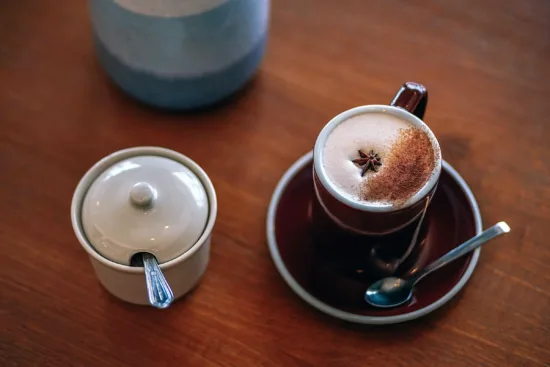
Try This Recipe: Date-Sweetened Chai
Ingredients:
- 1 cinnamon stick (Cassia or Ceylon)
- 1 clove
- 2 pods of green cardamom
- 2 black peppercorns
- 2 fennel seeds (optional)
- 1 slice fresh ginger
- 1 teaspoon of black tea leaves OR 1 tea bag
- 2 pitted dates*
- 1 cup filtered water
- 1 cup milk (whole milk recommended, but any milk is fine)
*If you don’t have a blender, you can replace the two pitted dates with 1 teaspoon of date syrup.
Method:
In a blender, add your milk (cold or room temperature) and pitted dates. Blend until smooth (at least 1 minute), and keep to the side for later use.
Add your cinnamon, clove, cardamom, peppercorns, and fennel seeds to a medium-sized saucepan and toast them over medium-high heat. When the spices start to become fragrant, add your water. When it comes to a boil, add your tea leaves and ginger.
Reduce the heat to medium-low and simmer everything for seven to 10 minutes, depending on how strong you want your tea to be. Add in your date + milk mixture and wait for it all to come to a boil, raising the heat if necessary. Once it comes to a boil, reduce the heat and simmer the mixture for another 5 minutes.
When you’re ready to serve, turn the heat to high and let the mixture come to a rolling boil, using a ladle to stir/aerate the mixture. Pour the mixture from a ladle through a strainer and into your mug, and enjoy! Experiment with the amount of pitted dates in your recipe to adjust the sweetness to your liking.
ABOUT THE AUTHOR
Emily Joy Meneses (she/they) is a writer and musician based in Los Angeles. Her hobbies include foraging, cortados, vintage synths, and connecting with her Filipino roots through music, art, food, and beverage.
Subscribe and More!
Out now: It’s the April + May 2024 issue of Barista Magazine! Read it for free with our digital edition. And for more than three years’ worth of issues, visit our digital edition archives here.
You can order a hard copy of the magazine through our online store here, or start a subscription for one year or two.



